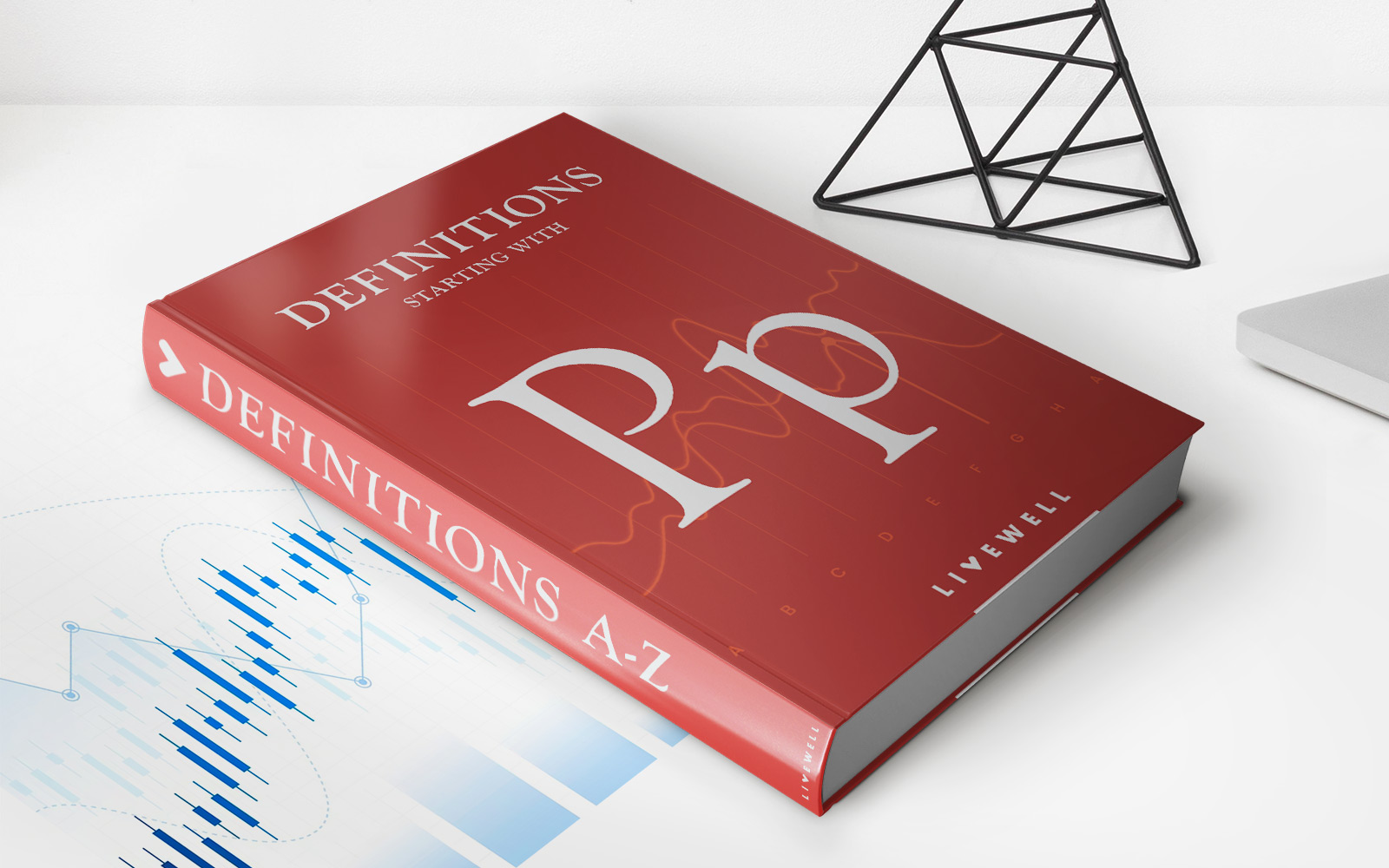

Finance
What Is Royalties In Accounting
Published: October 10, 2023
Learn about the concept of royalties in accounting and how they play a crucial role in finance. Gain insights into the financial implications and management of royalties.
(Many of the links in this article redirect to a specific reviewed product. Your purchase of these products through affiliate links helps to generate commission for LiveWell, at no extra cost. Learn more)
Table of Contents
- Introduction
- Definition of Royalties
- Types of Royalties in Accounting
- Recognition of Royalties in Financial Statements
- Accounting Treatment of Royalties
- Calculation and Allocation of Royalties
- Reporting and Disclosures of Royalties
- Examples of Royalties in Accounting
- Importance and Benefits of Accounting for Royalties
- Challenges and Issues in Accounting for Royalties
- Conclusion
Introduction
Welcome to the world of royalties in accounting! Royalties play a crucial role in the financial landscape and understanding their implications is essential for businesses, creators, and investors alike. Whether you’re an aspiring author, a musician, or a business owner, royalties can have a significant impact on your bottom line.
So, what exactly are royalties? In the context of accounting, royalties are payments made to a copyright holder or a licensor by another party to use a particular asset, such as intellectual property, patents, trademarks, or even mineral rights. These payments are typically based on a percentage of revenue or profits generated from the use of the asset.
For example, imagine you are a talented songwriter and you license your music to a popular streaming platform. Every time your song is played, you receive a royalty payment, which compensates you for the use of your intellectual property. Similarly, if you are a business owner who licenses a patented technology, you may receive royalties based on the sales or usage of that technology.
Understanding the different types of royalties, how they are recognized in financial statements, and their accounting treatment is crucial to accurately reflect the financial position and performance of a business or an individual. This article will explore the various aspects of royalties in accounting, providing insights into their calculation, allocation, reporting, and disclosure.
But why is accounting for royalties important? Well, not only does it ensure accurate financial reporting, it also helps businesses make informed decisions, assess the profitability of licensing agreements, and manage their intellectual property rights effectively. Additionally, accounting for royalties enables licensors to receive fair compensation for the use of their assets and provides transparency for stakeholders.
However, accounting for royalties can be complex and presents its own set of challenges. From determining the appropriate recognition criteria to calculating and allocating royalties, businesses must navigate a maze of regulations and contractual agreements. Additionally, ensuring proper reporting and disclosure adds another layer of complexity.
Throughout this article, we will delve into the different types of royalties, explore their recognition in financial statements, discuss their accounting treatment, and provide examples to illustrate their application in real-life scenarios. Let’s dive into the fascinating world of royalties in accounting and explore their inner workings!
Definition of Royalties
Royalties, in accounting, refer to payments made by one party to another for the use or exploitation of a specific asset. These assets can vary widely and include intellectual property, such as copyrights, patents, trademarks, and trade secrets, as well as mineral rights, licenses, and even franchise agreements.
When an individual or business owns the rights to these assets, they can enter into agreements with other parties to grant them the right to use or benefit from them. In return, the party receiving the rights, known as the licensee, pays royalties to the owner, known as the licensor. These royalties are typically expressed as a percentage of revenue, profit, or a flat fee.
One key aspect of royalties is that they are based on the actual usage or exploitation of the asset. This means that the amount of royalties paid can fluctuate depending on the level of usage or the success of the licensed product or service. For example, a songwriter may receive higher royalties if their music is heavily streamed or performed, while a patent holder may receive royalties based on the sales volume of a licensed product.
The payment of royalties serves two important purposes. First, it compensates the licensor for allowing others to benefit from the use of their asset or intellectual property. This compensation ensures that the licensor receives a fair share of the profits generated from the asset’s utilization.
Second, royalties provide an incentive for creators, inventors, and innovators to continue producing quality content, products, or services. By offering a monetary reward tied to the success of their creations, royalties motivate individuals and businesses to invest their time, talent, and resources in developing new and valuable assets.
It’s worth noting that royalties can take different forms depending on the nature of the agreement. For example, in the music industry, royalties can be categorized as mechanical royalties (for the physical reproduction of music), performance royalties (for the public performance of music), synchronization royalties (for the use of music in visual media), and streaming royalties (for digital streaming platforms).
In summary, royalties in accounting are payments made by a licensee to a licensor for the use or exploitation of an asset. They are based on an agreed-upon percentage of revenue, profits, or a flat fee and serve as compensation for the use of intellectual property or other valuable assets. Royalties provide a means to reward creators and incentivize continued innovation while ensuring fair compensation for the owners of the assets.
Types of Royalties in Accounting
There are various types of royalties recognized in accounting, each specific to the type of intellectual property or asset being utilized. Understanding these different types of royalties is essential for accurate accounting and financial reporting. Here are some common types:
- Copyright Royalties: Copyright royalties are perhaps the most well-known type of royalties. They are associated with the use of copyrighted materials, such as books, music, films, or software. When a creator licenses their copyrighted work to another party, they receive copyright royalties in exchange for the right to reproduce, distribute, perform, or display their work.
- Patent Royalties: Patent royalties are paid for the use of patented inventions or technologies. When a business licenses a patented technology from the inventor or holds the rights to a patent, they pay royalties to the patent holder. These royalties compensate the inventor for the use of their invention and provide an incentive for further innovation.
- Trademark Royalties: Trademark royalties are paid for the use of trademarks or brands. When one company licenses a trademark from another company, typically for the purpose of marketing a product or service, they pay royalties to the trademark owner. These royalties enable the trademark owner to profit from the use of their brand and maintain control over its quality and reputation.
- Franchise Royalties: Franchise royalties are associated with the franchising business model. When an entrepreneur acquires the rights to operate a franchise, they pay ongoing royalties to the franchisor. These royalties compensate the franchisor for the use of their brand, business system, and ongoing support provided to the franchisee.
- Mineral Royalties: Mineral royalties are paid for the extraction or mining of natural resources, such as oil, gas, coal, or minerals. Companies or individuals who hold mineral rights lease their rights to mining or exploration companies in exchange for royalty payments. These royalties are often tied to the production or revenue generated from the extracted resources.
These are just a few examples of the types of royalties encountered in accounting. It’s important to note that the specific terms and conditions of royalty agreements can vary widely based on factors such as the industry, the asset involved, and the negotiating power of the parties involved.
Understanding the specific type of royalty involved is crucial for appropriate accounting treatment and financial reporting. Properly identifying and classifying the royalties ensures that they are recorded and disclosed accurately in the financial statements to provide transparency for stakeholders and comply with accounting standards.
Recognition of Royalties in Financial Statements
The recognition of royalties in financial statements follows the principles of revenue recognition and depends on the specific terms of the royalty agreement. The general guideline is to recognize royalty revenue when it is earned and can be reliably measured. Here are the key considerations for recognizing royalties in financial statements:
1. Accrual Basis of Accounting: Generally, royalties are recognized on an accrual basis, meaning revenue is recorded when it is earned, regardless of when the cash is received. This ensures that revenue is recognized in the period in which the relevant activities take place, reflecting the economic substance of the transaction.
2. Revenue Recognition Criteria: The revenue recognition criteria, as outlined in accounting standards such as ASC 606 (Revenue from Contracts with Customers), must be met to recognize royalty revenue. These criteria include identifying the performance obligations, determining the transaction price, allocating the transaction price to the performance obligations, and recognizing revenue as the performance obligations are satisfied.
3. Measurement of Royalty Revenue: The measurement of royalty revenue depends on the terms of the agreement. It is commonly based on a percentage of revenue or profits generated from the licensed asset. If the royalty is based on a fixed amount per unit sold or a flat fee, the revenue is recognized as the sales or usage occurs.
4. Estimation of Uncertain Royalties: In some cases, the amount of royalties to be received may be uncertain, such as when royalties are based on future sales or usage volume. Accounting standards require estimates to be made for uncertain royalty revenue based on available information. These estimates are reassessed and adjusted when more reliable information becomes available.
5. Differential Royalties: Differential royalties occur when the royalty rate changes based on certain predetermined thresholds or sales milestones. In such cases, revenue is recognized at different rates as the thresholds are met. The recognition of differential royalties requires careful tracking of the sales or usage data to properly allocate and recognize revenue at the applicable rates.
6. Royalty Expenses: If the entity incurs royalty expenses to other licensors, such as payments for the use of intellectual property, these expenses are recognized in the financial statements as incurred. They are typically recorded as an operating expense and may impact the calculation of net royalty revenue.
Properly recognizing royalties in financial statements is crucial for providing accurate and transparent financial information. It ensures that stakeholders have a clear understanding of the revenue generated from licensing arrangements and allows for effective comparability across periods and companies. Companies should carefully follow accounting standards and guidance to ensure consistent and appropriate recognition of royalties in their financial reporting.
Accounting Treatment of Royalties
The accounting treatment of royalties depends on whether you are the recipient of royalties (licensor) or the payer of royalties (licensee). Let’s explore the accounting treatment from both perspectives:
1. Accounting Treatment for the Licensor (Recipient):
When you receive royalties as a licensor, the accounting treatment depends on the nature of the royalty agreement and the type of intellectual property being licensed. Here are the general accounting considerations:
a) Revenue Recognition: Royalty revenue is recognized when earned and realizable. It is typically recorded as revenue in the income statement. Revenue is recognized based on the agreed-upon terms, such as the percentage of sales or usage volume, as outlined in the royalty agreement.
b) Accounting for Uncollectible Royalties: If there is uncertainty about the collectability of royalty payments, it may be necessary to estimate and recognize uncollectible royalties as a provision for bad debts. This ensures that the financial statements accurately reflect the potential loss from uncollectible royalties.
2. Accounting Treatment for the Licensee (Payer):
When you pay royalties as a licensee, you need to consider the accounting treatment for the royalty expense. Here are the general accounting considerations:
a) Royalty Expense: Royalty payments made to licensors are typically recorded as an expense in the income statement. The expense is recognized in the period in which the underlying sales or usage occurs, based on the royalty agreement terms.
b) Recording Obligations: Licensees may have contractual obligations to pay minimum royalties or guaranteed royalties to licensors. These obligations are recognized as liabilities and disclosed in the financial statements until the related revenues are earned or the obligation is released.
c) Disclosure Requirements: Companies are required to disclose significant royalty arrangements in their financial statements. The disclosures should provide relevant information about the nature of the arrangement, the basis of calculation, and any material impact on the financial position and performance.
It’s important to note that the accounting treatment of royalties can become complex, especially when there are multiple licenses or complex agreements involved. It’s recommended to consult accounting professionals or refer to specific accounting standards, such as ASC 606 or IFRS 15 (Revenue from Contracts with Customers), for guidance on the appropriate accounting treatment.
Overall, proper accounting treatment ensures compliance with accounting standards, reflects the economic substance of the transaction, and provides transparency and useful information to stakeholders about the financial impact of royalty arrangements.
Calculation and Allocation of Royalties
The calculation and allocation of royalties can vary depending on the terms of the licensing agreement and the type of intellectual property or asset being licensed. It is important to accurately calculate and allocate royalties to ensure fair compensation for the licensor and to reflect the proper financial position of the licensee. Here are some key factors to consider:
1. Basis for Royalty Calculation:
The calculation of royalties often relies on a predetermined basis, which can include:
- The percentage of revenue generated from the licensed asset
- The percentage of profits derived from the asset
- A fixed amount per unit sold or per usage
- A combination of the above factors
It is essential to clearly define the basis for royalty calculation in the licensing agreement to avoid any misunderstandings or disputes.
2. Determining Revenue or Profits:
For revenue-based royalties, the licensee needs to accurately track and report the revenue specifically generated from the licensed asset. This may involve separate accounting and reporting systems to isolate revenue associated with the asset in question.
If the royalties are based on profits, the licensee must calculate the net profits attributable to the licensed asset by deducting all applicable costs and expenses. Transparent and well-documented expense allocation methods are crucial to ensure accurate royalty calculations.
3. Sales or Usage Tracking:
The proper tracking of sales or usage data is vital for calculating royalties accurately. Licensees need to maintain detailed records of the sales or usage of the licensed asset to determine the appropriate royalty amount. This may involve implementing systems or tools to capture and track relevant data.
4. Sub-Licensing Arrangements:
In some cases, licensees may sub-license the intellectual property or asset to other parties. When sub-licensing occurs, proper calculations and allocations of royalties need to be made to ensure fair compensation to all parties involved. Contracts and agreements should clearly outline the rights and obligations of each party, including the percentage or amount of royalties to be paid.
5. Contractual Royalty Caps or Minimums:
In certain agreements, there may be royalty caps or minimums specified. A royalty cap sets a maximum limit on the amount of royalties payable, while a royalty minimum establishes a guaranteed minimum payment regardless of sales or usage results. Licensees need to factor in these caps or minimums when calculating and allocating royalties.
6. Exchange Rate Considerations:
If the royalty payments involve different currencies, fluctuations in exchange rates can impact the calculation and allocation of royalties. Licensees should take into account the applicable exchange rates at the time of royalty calculation to ensure accurate and fair payments to licensors.
It is essential for both licensors and licensees to maintain accurate and clear records of the calculations and allocations of royalties. This ensures transparency, reduces potential disputes, and accurately reflects the financial impact of the royalty arrangements.
Reporting and Disclosures of Royalties
The reporting and disclosure of royalties in financial statements provide important information to stakeholders about the financial impact of licensing agreements and the utilization of intellectual property. This transparency allows users of the financial statements to understand and assess the significance and risks associated with royalty arrangements. Here are key considerations for reporting and disclosing royalties:
1. Income Statement Presentation:
Royalty revenue earned by the licensor is typically presented as a separate line item in the income statement or included as part of the relevant revenue category. This allows users to assess the contribution of royalties to the overall revenue generated by the company.
For licensees, royalty expenses are typically reported separately in the income statement as an operating expense or included in the specific expense category related to the licensed asset. This helps users understand the costs associated with the utilization of intellectual property.
2. Balance Sheet Presentation:
For licensors, any deferred royalty revenue or minimum royalty guarantee received but not yet recognized as revenue should be reported as a liability on the balance sheet. This ensures that the financial position reflects the unearned royalties and obligations associated with the licensing agreements.
Licensees may have payable liabilities related to royalty obligations. These royalty payables should be recorded as a liability on the balance sheet until they are settled. Proper tracking and reporting of these liabilities provide information on the financial obligations associated with the licensing agreements.
3. Disclosures in the Notes to Financial Statements:
Companies are required to provide detailed disclosures in the notes to the financial statements to provide additional information about the royalty arrangements. The following are common disclosures related to royalties:
- Details of significant royalty agreements, including the nature of the asset, the basis of calculation, and the terms of the agreement
- Information about minimum royalty guarantees or royalty caps, if applicable
- Details of unearned royalty revenue or royalty payables
- Information about any sub-licensing arrangements and their impact on the royalty obligations
- Significant judgments and estimates applied in the recognition and measurement of royalty revenue
4. Segment Reporting:
If royalties are significant to the financial performance of a specific segment or business unit, companies may need to disclose segment-specific royalty revenue or expenses in the segment reporting section. This allows users to understand the impact of licensing agreements on specific business segments.
Proper reporting and disclosure of royalties not only comply with accounting standards and regulatory requirements but also provide transparency and useful information to stakeholders. This allows them to evaluate the financial impact of royalty arrangements and make informed decisions or assessments about the company’s financial position and performance.
Examples of Royalties in Accounting
Royalties are prevalent in various industries and can take many forms. Here are some examples of royalties in accounting to illustrate their application:
1. Music Industry:
In the music industry, artists and songwriters receive royalties for the use of their music. For example, when a song is played on the radio, streamed on a digital platform, or used in a movie or television show, the songwriter or copyright holder receives performance royalties. Similarly, when a music album is sold or downloaded, the artist receives mechanical royalties.
2. Publishing Industry:
Authors and publishers earn royalties from book sales. When a book is sold, the author receives a percentage of the revenue as a royalty. This applies to both physical book sales and e-book downloads. Additionally, academic textbook publishers often license their material to educational institutions, earning royalties based on the number of copies sold or the usage of their content.
3. Software Industry:
In the software industry, developers and companies earn royalties for the use of their software or applications. For example, when a company licenses a software program for its employees’ use, the software developer receives royalties based on the number of licenses sold. This also applies to mobile applications, where developers earn royalties based on the number of downloads or in-app purchases.
4. Film and Television Industry:
In the film and television industry, actors, writers, and directors earn royalties for their contributions. Actors receive royalties when a film or TV show is distributed through various channels like theaters, DVD sales, or streaming platforms. Writers earn royalties based on the sales or licensing of scripts or screenplays. Similarly, directors earn royalties when their films or TV shows are syndicated or distributed internationally.
5. Patent Licensing:
In the technology and manufacturing sectors, patent holders earn royalties through licensing agreements. When a company wants to use a patented technology, it enters into a licensing agreement with the patent holder. The licensee pays royalties based on the sales or usage volume of products incorporating the patented technology.
6. Franchise Agreements:
In the world of franchising, franchisors earn royalties from franchisees for the use of their brand, business model, and ongoing support. Franchisees pay a percentage of their sales as a royalty to the franchisor, allowing them to benefit from the established brand and proven business system.
These examples highlight the diverse nature of royalties across different industries. Whether it’s the use of creative works, intellectual property, trademarks, or franchise rights, royalties compensate the asset owners and provide a means for them to earn income based on the utilization or exploitation of their assets.
Importance and Benefits of Accounting for Royalties
Accounting for royalties plays a vital role in ensuring accurate financial reporting and provides several important benefits for businesses and individuals involved in licensing agreements. Here are the key importance and benefits of accounting for royalties:
1. Accurate Financial Reporting:
Accounting for royalties ensures that financial statements accurately reflect the revenue generated from licensing arrangements. This allows stakeholders, such as investors, lenders, and shareholders, to have a clear understanding of the financial performance and position of the entity. Accurate financial reporting promotes transparency, builds trust, and facilitates decision-making.
2. Compliance with Accounting Standards:
Accounting for royalties helps businesses comply with relevant accounting standards, such as ASC 606 or IFRS 15, which provide specific guidelines for revenue recognition. Following these standards ensures consistency and comparability in financial reporting, making it easier for stakeholders to evaluate performance across industries and companies.
3. Informed Decision-Making:
By accurately accounting for royalties, businesses can generate meaningful information that aids decision-making. For licensors, understanding the revenue generated from licensing agreements can help assess the profitability of intellectual property and guide strategic decisions regarding licensing arrangements. For licensees, tracking royalty expenses helps evaluate the cost-effectiveness of utilizing intellectual property and inform decisions about future licenses.
4. Fair Compensation and Revenue Share:
Accounting for royalties ensures that licensors receive fair compensation for the use of their assets. Proper calculations and allocations of royalties guarantee that creators, inventors, and copyright holders receive their rightful share of revenue or profit generated from the licensed asset. This enables talent to be rewarded for their creative or innovative contributions.
5. Intellectual Property Management:
Accounting for royalties aids in managing and protecting intellectual property rights effectively. By having a clear understanding of the revenue streams, royalties earned, and costs associated with licensing arrangements, businesses can make informed decisions regarding the acquisition, development, and licensing of intellectual property. It allows them to assess the value and potential of different assets in their portfolio.
6. Financial Transparency and Stakeholder Trust:
Accounting for royalties enhances transparency and fosters trust among stakeholders. Transparent financial reporting demonstrates the commitment to accurate and ethical business practices, which is essential for attracting investors, fostering strong relationships with customers and suppliers, and preserving the corporation’s reputation.
7. Legal and Contractual Compliance:
Accounting for royalties allows businesses to meet legal and contractual obligations. Licensing agreements often have specific requirements and obligations, such as minimum royalty guarantees, reporting obligations, or audit rights. Proper accounting ensures compliance with these requirements, reducing the risk of legal disputes and potential financial liabilities.
In summary, accounting for royalties is crucial for accurate financial reporting, compliance with accounting standards, informed decision-making, fair compensation, intellectual property management, financial transparency, and legal compliance. By ensuring proper accounting treatment and reporting, businesses and individuals can maximize the benefits and mitigate the risks associated with licensing agreements.
Challenges and Issues in Accounting for Royalties
Accounting for royalties presents several challenges and issues that businesses need to navigate. These challenges stem from the complex nature of licensing agreements, the variety of royalties involved, and the need to adhere to accounting standards. Here are some common challenges and issues in accounting for royalties:
1. Complexity of Royalty Agreements:
Royalty agreements can be complex, involving multiple parties, different types of intellectual property, and varying terms and conditions. Determining the appropriate recognition, measurement, and allocation of royalties within these agreements can be challenging, requiring careful analysis and application of accounting principles.
2. Determining the Fair Value of Royalties:
Estimating the fair value of royalties can be a challenge, especially when the royalties depend on uncertain future outcomes. For example, royalties based on sales or usage volume may require subjective judgment and estimation. Determining the appropriate breakpoints, thresholds, and rates can be challenging, and ongoing reassessment is often necessary.
3. Tracking and Reporting Sales or Usage Data:
Accurate tracking and reporting of sales or usage data is crucial for calculating and allocating royalties correctly. Companies need robust systems and processes to capture and record accurate information. Issues in data collection, systems integration, or data reliability can hinder the accurate calculation and reporting of royalties.
4. Determining the Appropriate Recognition Criteria:
Choosing the appropriate recognition criteria for royalties can be complex. Licensing agreements often have specific conditions that need to be met before royalties are recognized as revenue or as an expense. Determining when control is transferred or when performance obligations are satisfied requires careful assessment and interpretation of the agreement terms.
5. Forecasts and Estimates:
Royalties often rely on forecasts and estimates, particularly when royalties are based on future outcomes. Revenue forecasts, sales projections, and usage volume predictions can be subject to inherent uncertainties and may require adjustments over time. The accuracy of these forecasts and estimates can impact the recognition and measurement of royalties.
6. Compliance with Accounting Standards:
Ensuring compliance with accounting standards, such as ASC 606 or IFRS 15, presents its own challenges. These standards provide guidance on revenue recognition, but their application to specific royalty agreements can be complex. Companies need to stay updated with the latest accounting standards and interpret them correctly for their royalty arrangements.
7. Audit and Contractual Compliance:
Royalty agreements often involve audit rights and reporting obligations, adding another layer of complexity. Companies need to ensure accurate record-keeping, timely reporting, and compliance with contractual requirements to satisfy the demands of licensors and auditors. Failure to meet contractual obligations can lead to disputes and potentially damage relationships.
Overall, accounting for royalties requires careful attention to detail, a thorough understanding of the agreement terms, adherence to accounting standards, accurate data tracking, and compliance with contractual obligations. Businesses must navigate these challenges to ensure accurate financial reporting and maintain transparency in their royalty-related activities.
Conclusion
Accounting for royalties is a critical aspect of financial management for entities involved in licensing agreements. Whether you are a licensor receiving royalties or a licensee paying royalties, understanding the intricacies of accounting for royalties is essential to ensure accurate financial reporting, compliance with accounting standards, and informed decision-making.
Royalties come in different forms, ranging from copyright and patent royalties to franchise fees and mineral rights. The calculation, recognition, and allocation of royalties require careful consideration of factors such as the basis for royalty calculation, tracking of sales or usage data, and compliance with contractual obligations. Adhering to accounting standards, such as ASC 606 or IFRS 15, is crucial for consistent and transparent reporting.
Accounting for royalties offers several benefits, including accurate financial reporting, informed decision-making, fair compensation for licensors, effective intellectual property management, and stakeholder trust. By providing relevant and reliable information about revenue generated from licensing arrangements, companies can assess profitability, evaluate the value of intellectual property, and ensure compliance with legal and contractual obligations.
However, accounting for royalties is not without its challenges. Complexity in royalty agreements, determining fair value, tracking and reporting sales data, and compliance with accounting standards can pose obstacles. The use of forecasts and estimates, the need for ongoing reassessment, and audit and contractual compliance add further complexity to the process.
In conclusion, accounting for royalties requires diligence, accurate data management, a thorough understanding of agreements, and compliance with accounting standards. Clear and transparent financial reporting ensures stakeholders have a comprehensive view of the revenue generated from licensing arrangements and understand the financial impact on the business.
By effectively accounting for royalties, companies can thrive in an increasingly competitive landscape, manage their intellectual property effectively, and foster trust and confidence among stakeholders. With careful attention to the accounting treatment, reporting, and disclosure of royalties, businesses can navigate the complexities of royalty arrangements and leverage their intellectual assets to drive growth and success.














